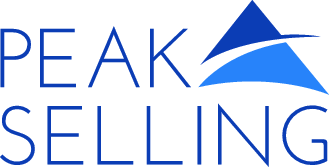Develop a Sales Strategy Using the Three C Method
Posted on 10/17/2018 in Sales Call PlanningAs sales consultants we encourage all sales professionals and sales managers to use our 3 C's Method to develop and then implement an effective sales strategy. It is a practical and intuitive way to create a sales strategy that will win more sales for you and, best of all, it doesn't take long to do.
What are the 3 C's?
Customer, Competitors, and Company (your organization) are the three key factors that you should address in your sales strategy. Let's begin with some examples for each factor, share some common mistakes, and then we'll conclude with the ideal sequence that you should follow.
Factor #1: Customer
This is the most essential factor because the more that you know about the customer, then you are in a better position to assess two things: 1) Is this customer worth winning? and, then assuming that it is worth winning, 2) How can we capitalize on what we know about this customer to win the sale?
To do this well requires that you become proficient at asking as many relevant questions as possible. Here are two examples of questions that you might ask: What is most important to this customer when selecting a supplier? Who is involved in the approval and decision-making process?
The two most common mistakes that average sellers make regarding the "Customer Factor" are to, first, not ask enough questions and, second, limit themselves by not identifying all the decision-makers and influencers, which means that they don't get all the necessary input. For example, perhaps you spoke with the purchasing agent and technical person but didn't speak with the users in the plant or facility.
If you're interested in learning more about high-gain questions, we have several resources such as this earlier blog titled Ten Powerful Sales Questions as well as our for-purchase online module titled Questioning Skills.
Factor #2: Competitors
You cannot develop an effective sales strategy if you don't know who you are competing with. After all, customers don't make decisions in a vacuum. They are always going to compare your product/service and company to other alternatives.
This means that you must ask additional questions to the customer such as: Who are your currently buying from? Who else are you considering? What do you like about your current supplier? What would you like to improve?
Then, after you've identified the competitors, your sales strategy must address two things: 1) What differentiates us from this competitor? and 2) How can we overcome any strengths that this competitor can offer the customer? To win the sale, your company and product/service must exceed what the customer has been receiving from the competitor. Otherwise, there is no compelling reason for the customer to switch.
Although it sounds obvious to do everything cited above for the "Competitors Factor," many salespeople don't gather and utilize information about competition. They give a standard sales pitch to every customer and fail to customize their strategy to take advantage of what they do well relative to a specific competitor.
Factor #3: Company
The third and final factor is your Company and more specifically, any relevant information about the products and services that you hope to sell to the customer. Done well, you highlight the benefits and value that you can provide. For more information on this, our blog titled Are You Proficient Selling Value provides suggestions and also has links to other value selling resources.
There are three mistakes that you need to avoid when talking about your company: 1) Information Overload - don't talk too much about your company and product; instead, limit yourself to your two or three strongest reasons; 2) Link what you are saying to the customer's needs; in other words, what you learned for Factor #1; and, 3) Highlight those things that differentiate you from the Competitors.
What is the Ideal Sequence to Use for the 3 C's?
We purposely listed the three factors as #1: Customer, #2: Competitors, and #3: Your Company, because this is the ideal sequence to follow. Average sellers do the opposite and tend to focus too much on the third factor, which is why they often talk too much about their company and product. You'll have much more success if you focus more time on the other two factors. In a phrase, be customer-focused, not company-focused.
If you're interested in more information on the 3 C's, we teach it in several of our workshops and also use it in our 1-on-1 sales coaching. Contact us if you'd like to learn more.
